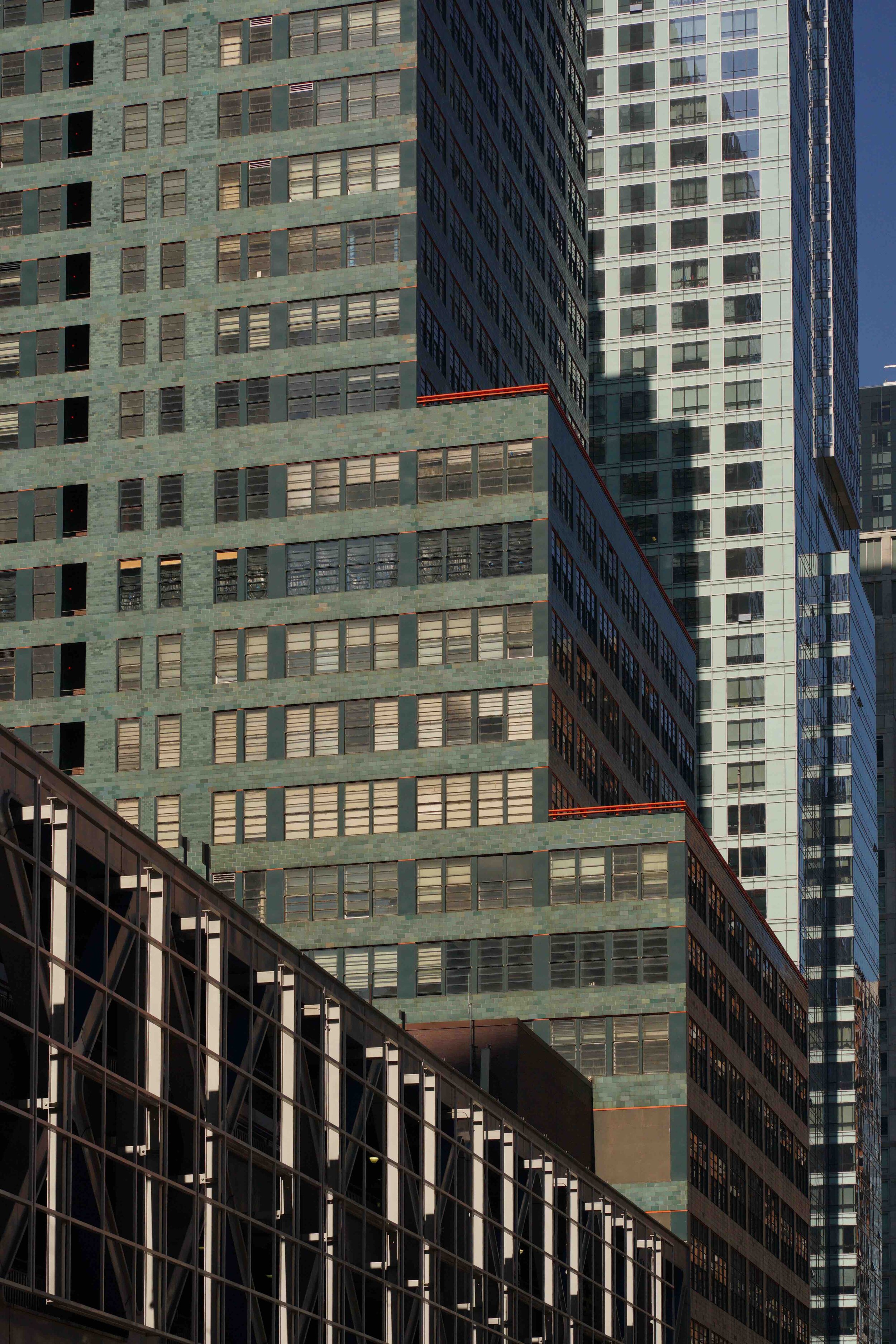McGraw Hill Building - Functionalism and Modernity with a pinch of Art Deco
By Guglielmo Mattioli
Photos by Guglielmo Mattioli, 2020
One of Manhattan’s true architectural masterpieces, the McGraw-Hill building is one of Midtown’s most unique skyscrapers. Designed by Raymond Hood, one of New York City’s greatest architects and designer of Rockefeller Center, the building was completed in 1931, merging two styles: late 1920s Art-Deco with the more modern International Style.
When completed, McGraw Hill at 330 West 42nd Street was so different from other skyscrapers that some even described it as an ugly “green elephant.” Indeed, the facade is entirely cladded in green tiles that veer to a more bluish hue as they ascend to the sky. The building rises to the 35th floor in a sequence of massive setbacks that not only confer grace to its vertical development but also have a purpose: wider floor plans at the bottom to host printing machinery and large working spaces, narrower on top for executives' offices. Windows develop horizontally instead of vertically, a sign of the modernism wave landing in NYC. On top of it all, the massive McGraw-Hill sign, an art deco masterpiece in it of itself, embedded in a machine-like crown so iconic that many years later, it was referenced in a close-by residential tower. The lobby, usually close to the public, it's a triumph of black and green marbles ornate with golden finishes.
Originally built to host the headquarters of McGraw-Hill publishing company, the building was also the birthplace of Timely Comics in 1939, now known as Marvel Comics, before moving to another iconic New York City skyscraper, the Empire State Building, in 1942.
The top floors were recently converted into rental units. A two-bedroom on the 35th floor goes for more than $6k a month. Living in architectural history comes at a cost.
Guglielmo Mattioli Is a multimedia journalist with a background in architecture and urban planning. Using different mediums, from writing to video and Virtual Reality, he tells stories mostly focusing on the built environment. Guglielmo's work appeared on The New York Times, National Geographic, The Guardian, Architect’s Newspaper, Metropolis Magazine, City Limits and RAI.




